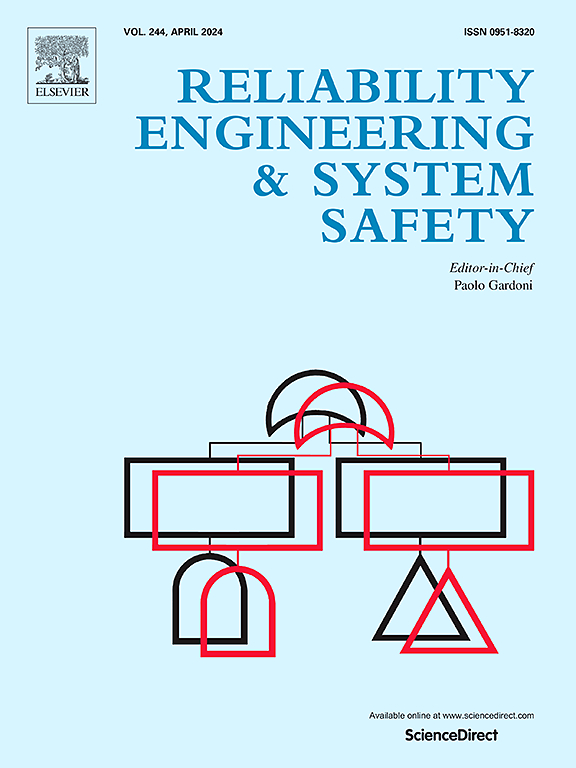Methodological guidance and quantitative measures regarding seismic capacity and safety of freestanding and inelastic anchored nonstructural elements housed in ordinary and critical facilities
IF 9.4
1区 工程技术
Q1 ENGINEERING, INDUSTRIAL
引用次数: 0
Abstract
The study provides a comprehensive investigation of the seismic capacity and safety assessment of nonstructural elements (NEs). A general and extendable methodology is developed for robust assessment of two representative model categories of NEs: rocking-dominated rigid blocks (RBs) and inelastic single-degree-of-freedom (SDOF) systems, accounting for most acceleration-sensitive elements housed in ordinary and critical facilities. Numerical analysis is carried out implementing nonlinear dynamic models for NEs and accounting for multiple features, such as loading history types (ground and floor motions), NE dynamic properties, intensity measures (IMs), and multiple damage states (DSs). Quantitative capacity measures are provided, as well as novel closed-form equations are proposed for expeditious capacity assessment of NEs, including both capacity curves and surfaces. The seismic safety of the investigated NEs is estimated considering both ordinary and critical buildings, over low- to high-seismicity sites in Italy.
求助全文
约1分钟内获得全文
求助全文
来源期刊

Reliability Engineering & System Safety
管理科学-工程:工业
CiteScore
15.20
自引率
39.50%
发文量
621
审稿时长
67 days
期刊介绍:
Elsevier publishes Reliability Engineering & System Safety in association with the European Safety and Reliability Association and the Safety Engineering and Risk Analysis Division. The international journal is devoted to developing and applying methods to enhance the safety and reliability of complex technological systems, like nuclear power plants, chemical plants, hazardous waste facilities, space systems, offshore and maritime systems, transportation systems, constructed infrastructure, and manufacturing plants. The journal normally publishes only articles that involve the analysis of substantive problems related to the reliability of complex systems or present techniques and/or theoretical results that have a discernable relationship to the solution of such problems. An important aim is to balance academic material and practical applications.
 求助内容:
求助内容: 应助结果提醒方式:
应助结果提醒方式:


